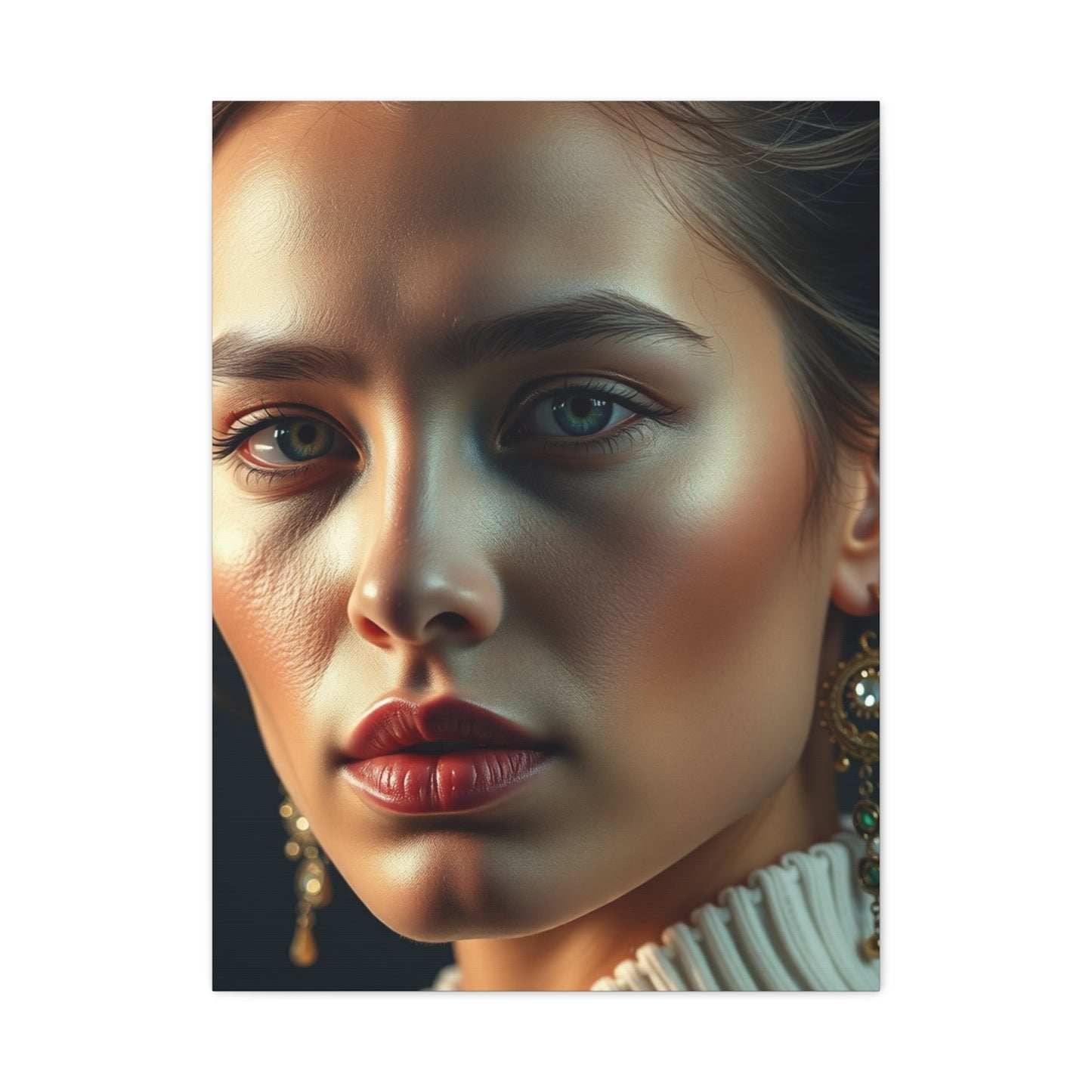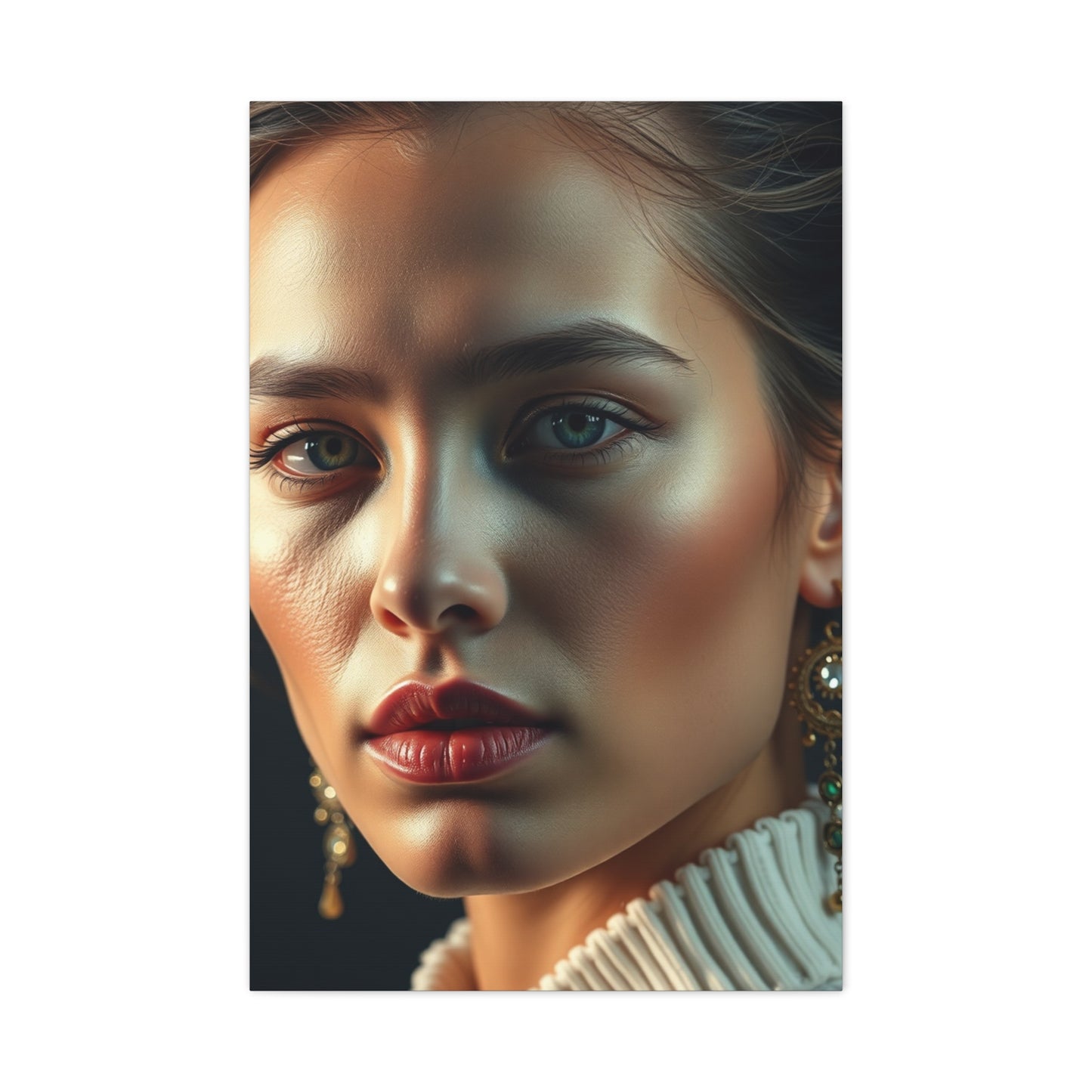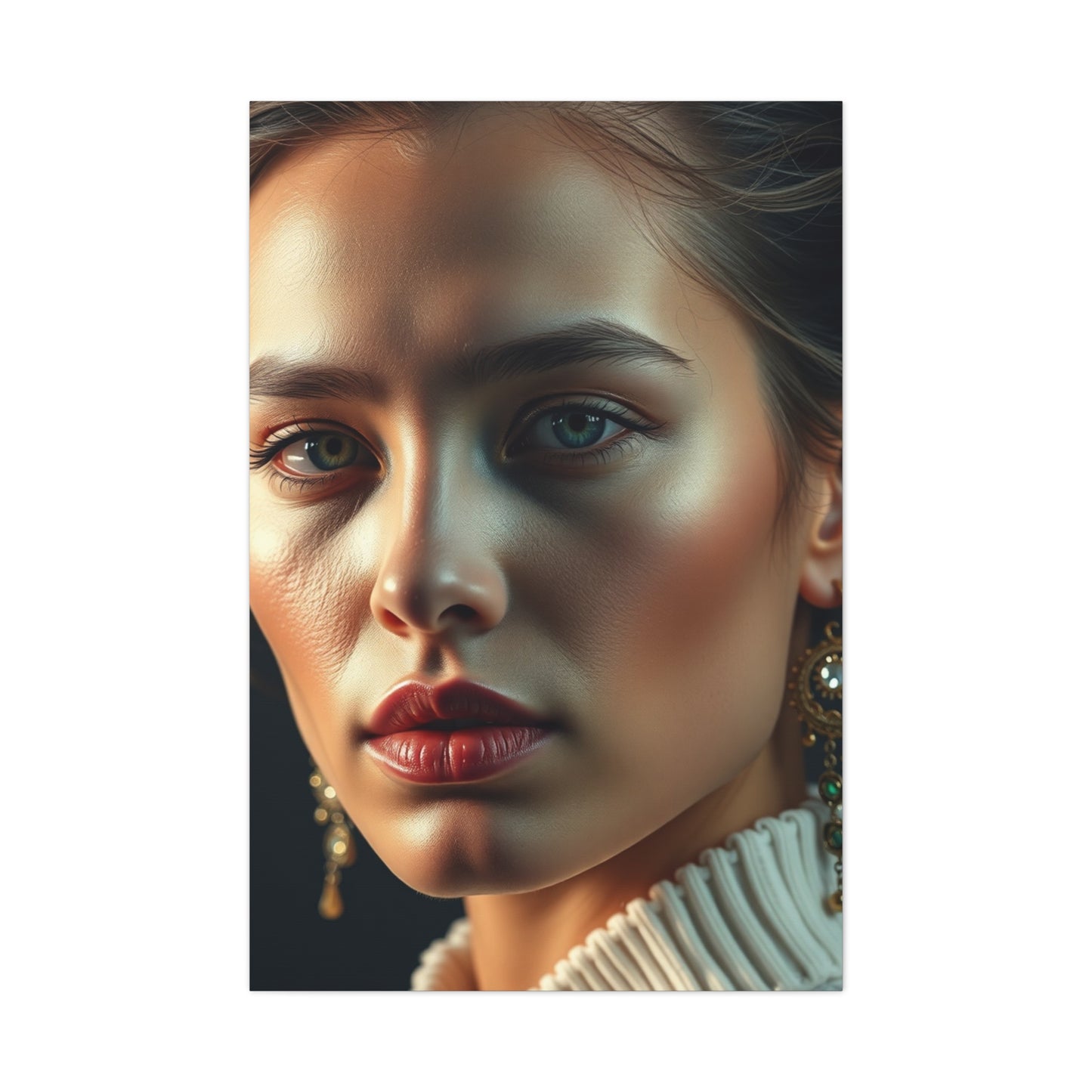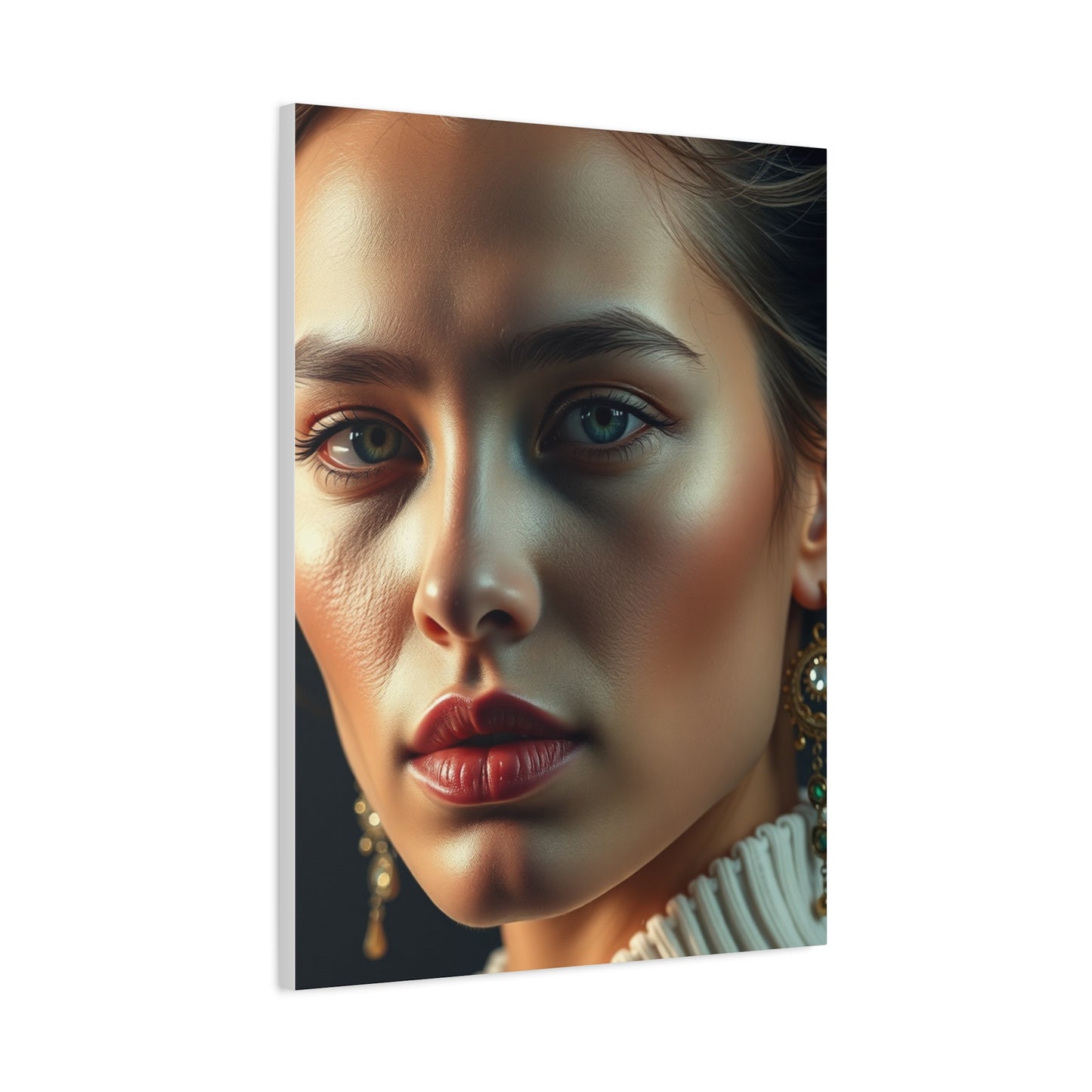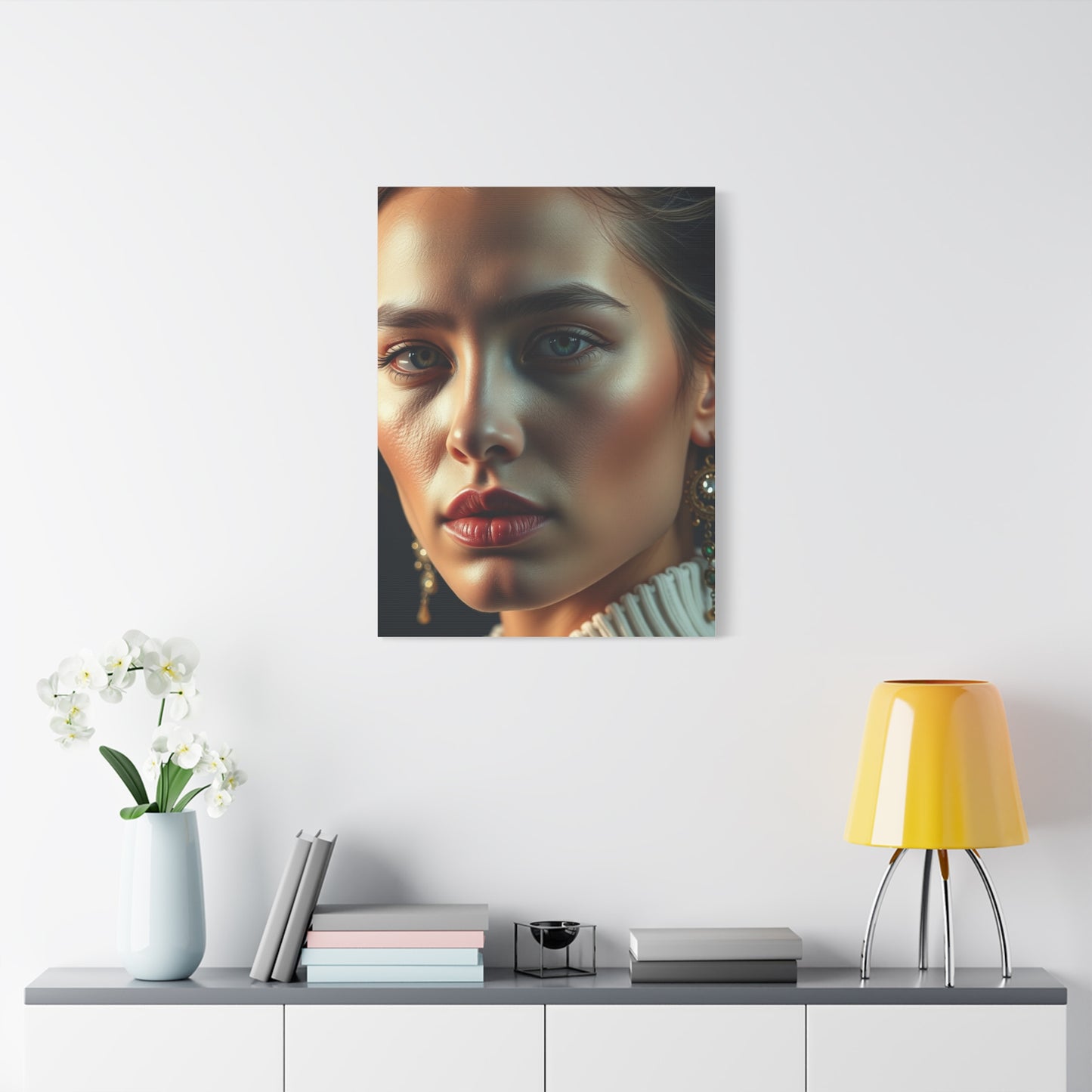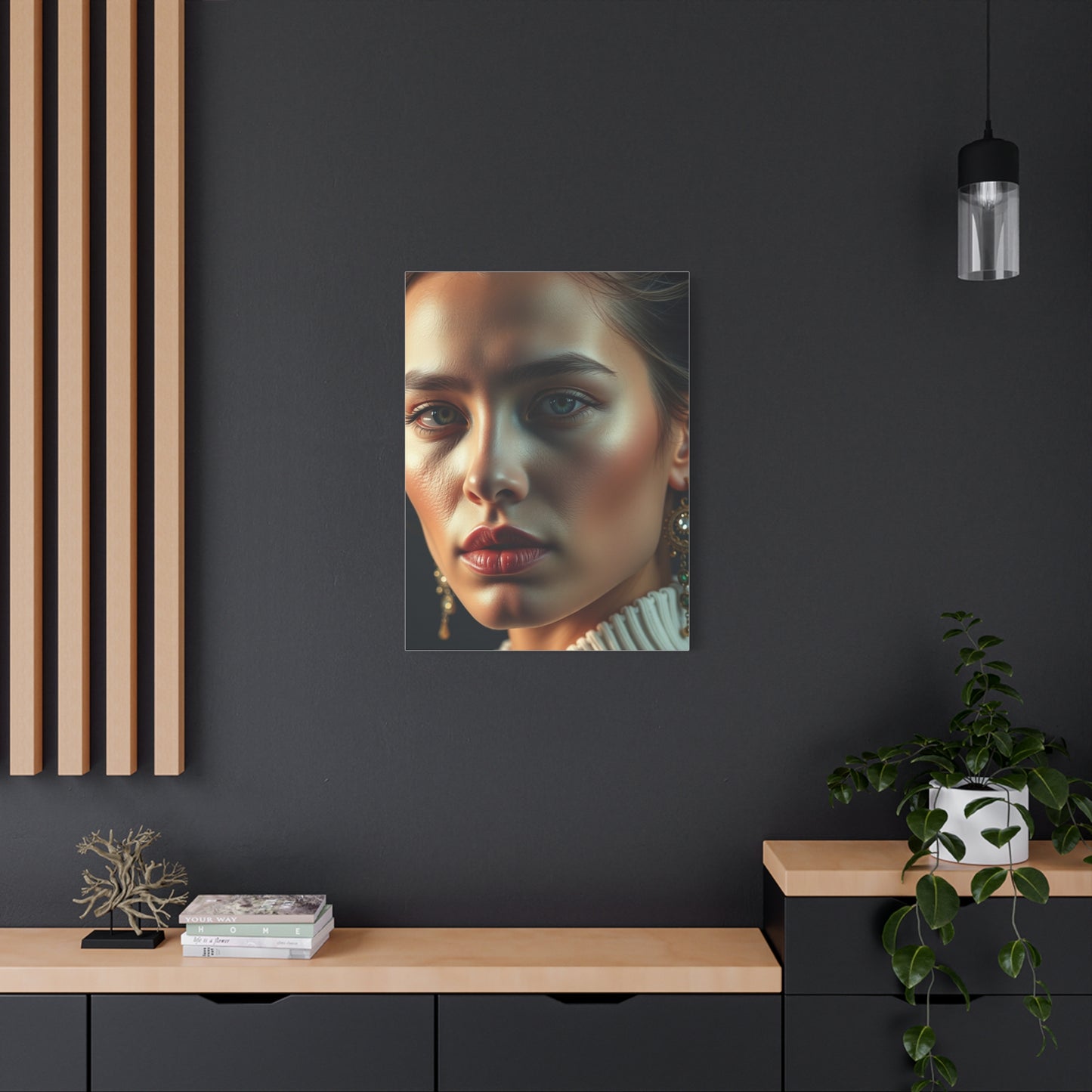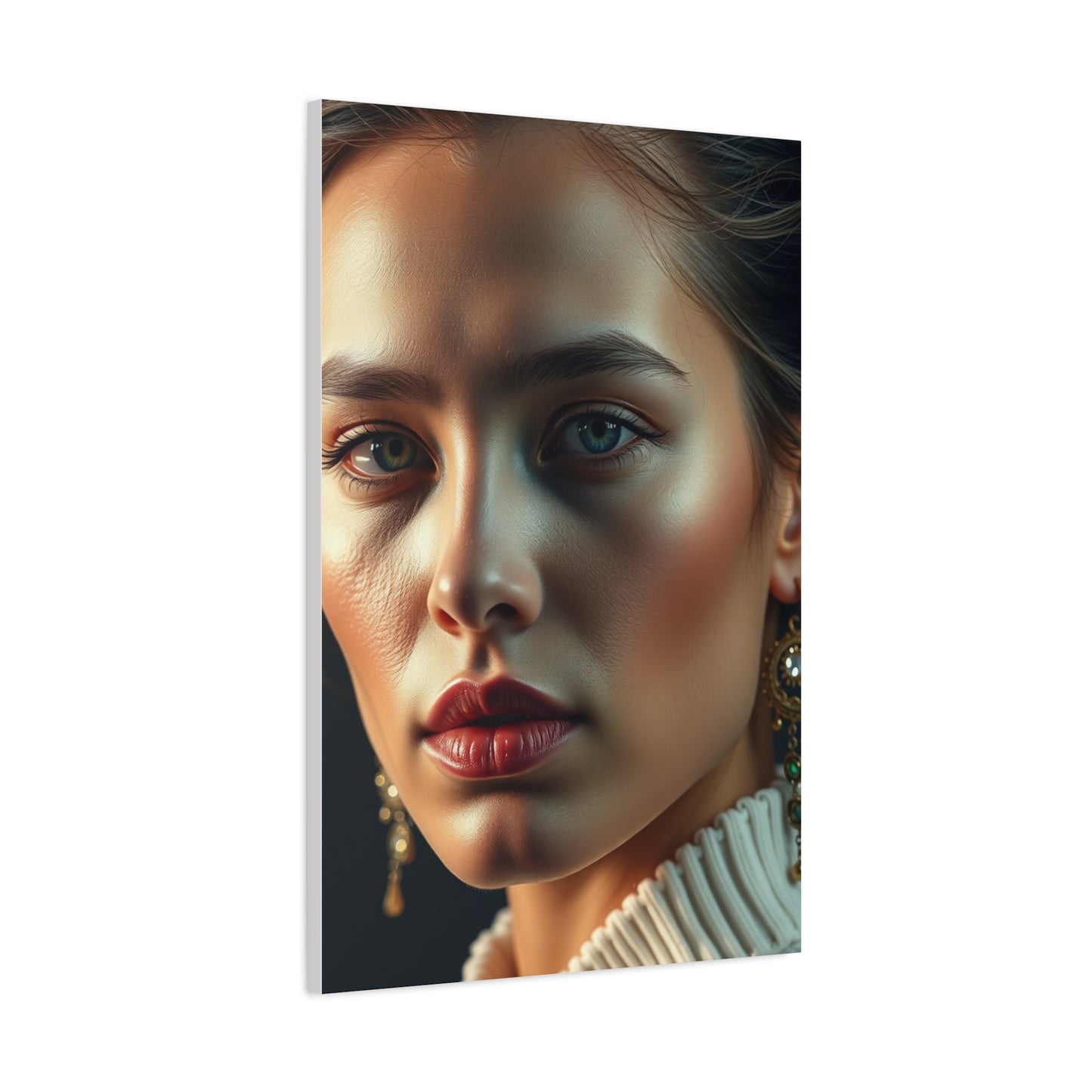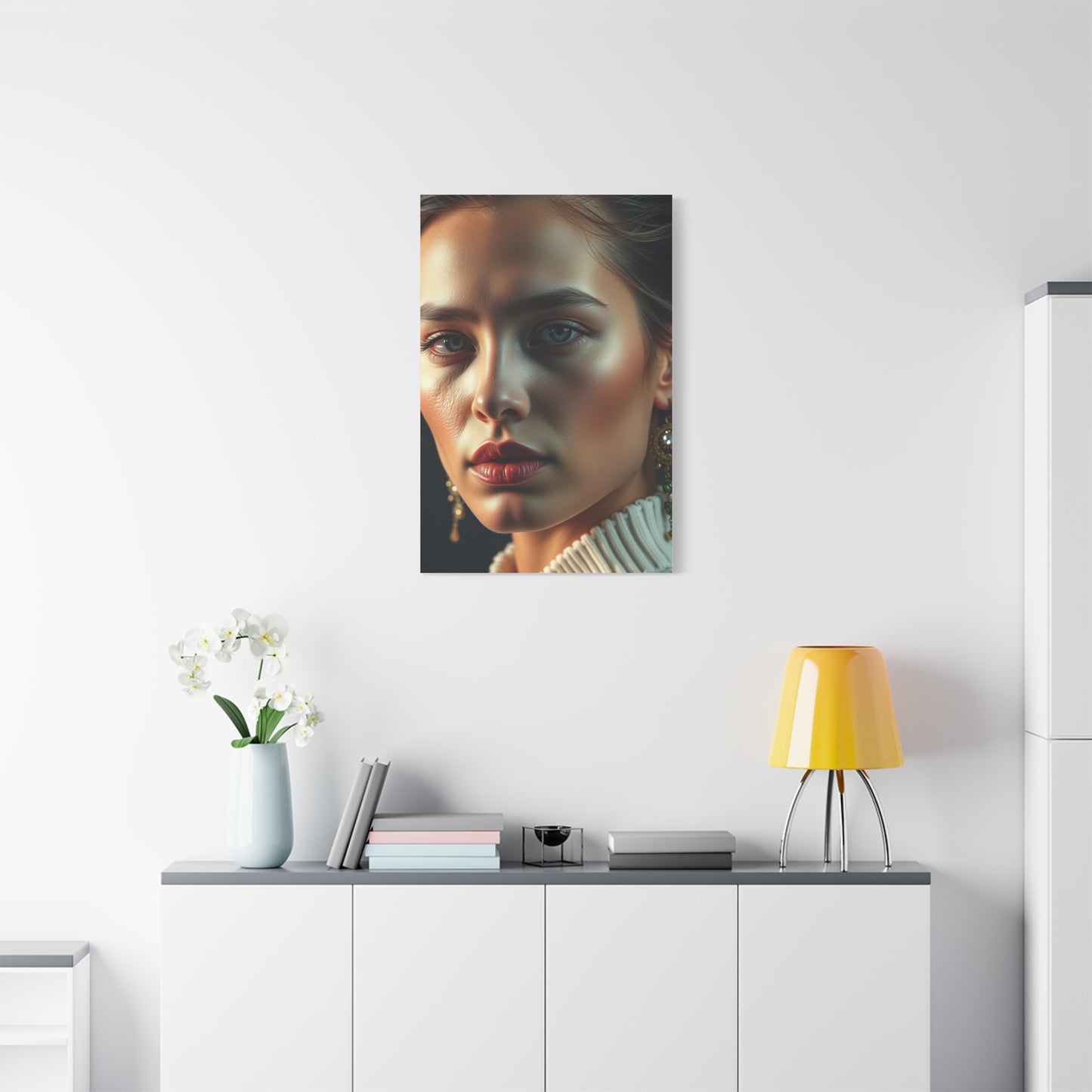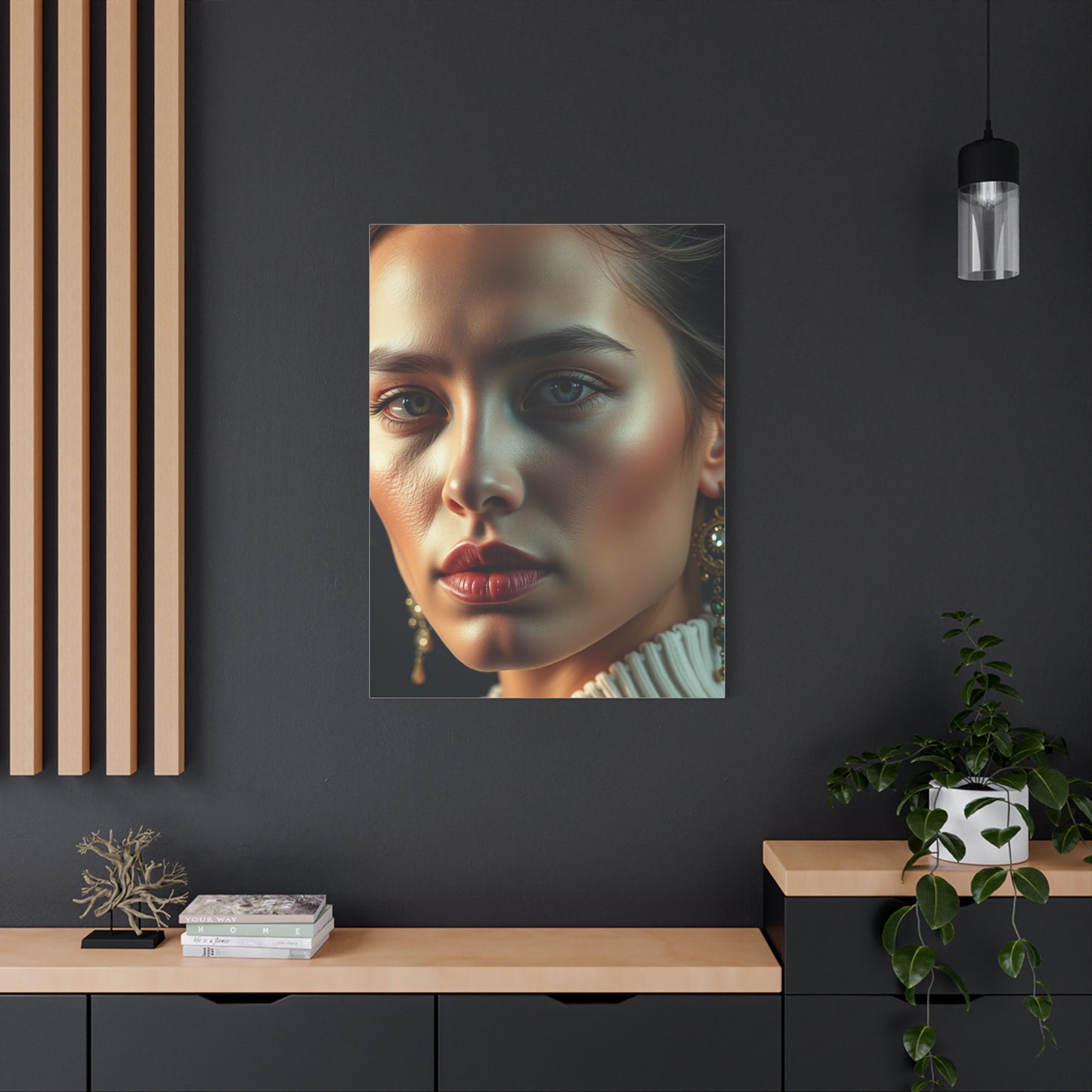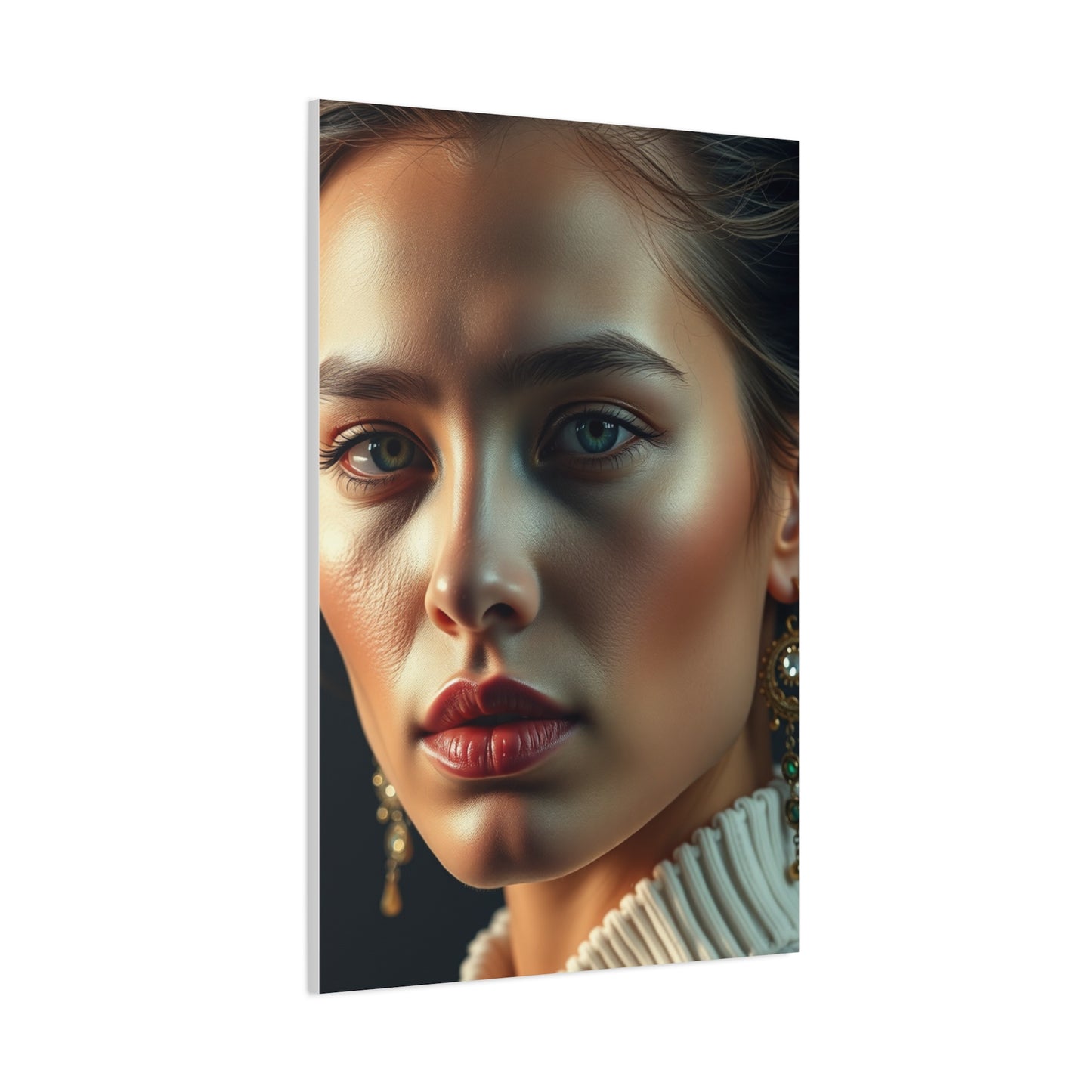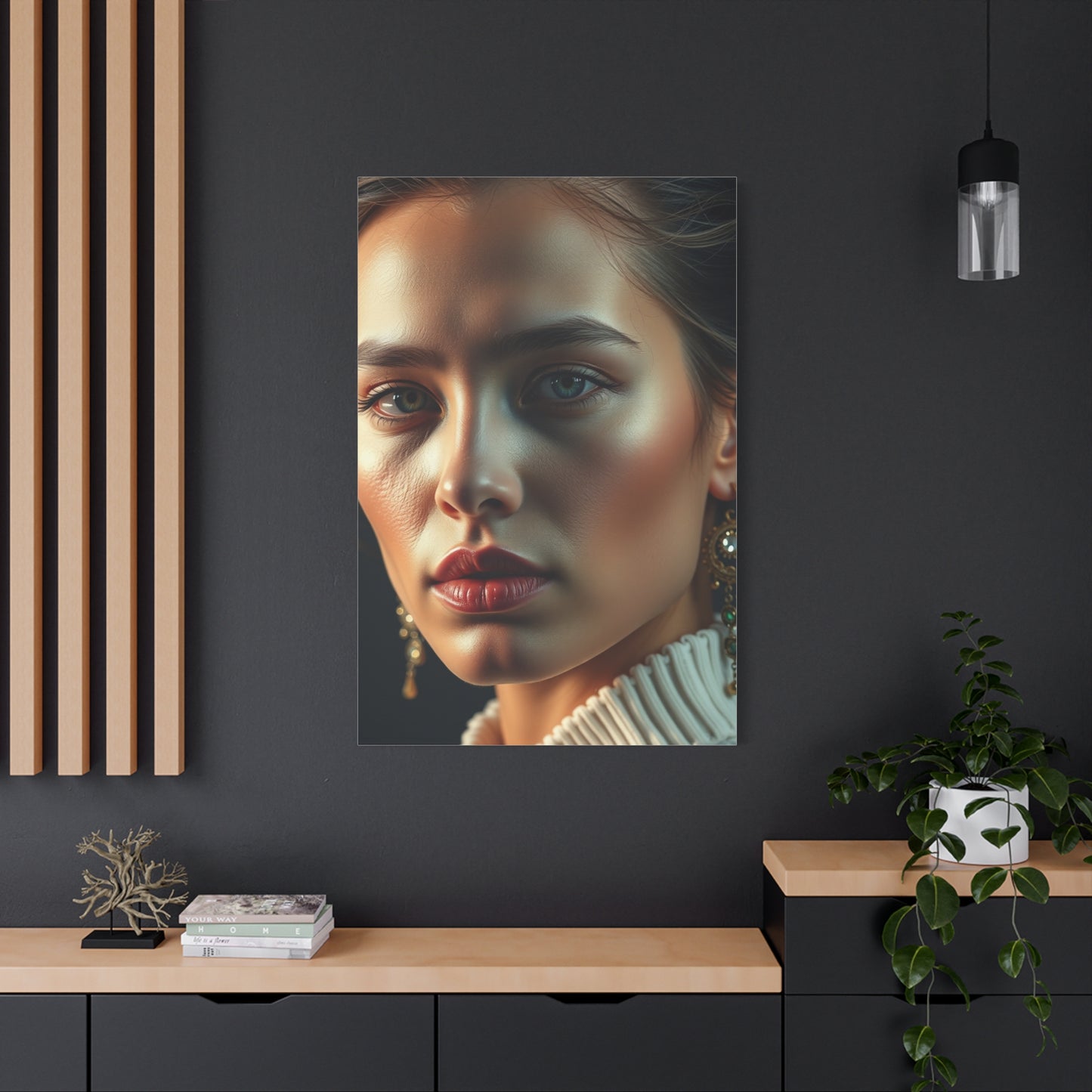Regal Visage Canvas Collection Wall art: Elevating Interior Spaces with Sophisticated Portraiture
The world of interior design continuously evolves, bringing fresh perspectives on how we transform our living and working environments into reflections of personal taste and cultural appreciation. Among the most captivating trends emerging in contemporary home decoration stands the regal visage canvas collection, a sophisticated approach to wall art that combines classical portraiture aesthetics with modern printing technology and diverse artistic interpretations. These stunning pieces serve far beyond mere decorative functions, acting as conversation starters, cultural touchstones, and powerful statements about identity, history, and artistic appreciation within any space they inhabit.
Canvas art featuring regal portraits has experienced a remarkable resurgence in recent years, moving from traditional galleries and museums into residential and commercial spaces worldwide. This transition reflects a broader cultural movement toward embracing artistic heritage while making it accessible and relevant to contemporary audiences. The appeal of these majestic images lies in their ability to convey dignity, history, and narrative depth through carefully composed visual elements that capture the essence of nobility, leadership, and refined aesthetics across various cultural traditions.
The Cultural Significance of Portrait Art in Modern Interiors
Portrait art has served humanity for millennia as a method of commemorating important individuals, preserving historical moments, and exploring the human condition through visual representation. Within the context of regal portraiture specifically, these artworks carry additional layers of meaning related to power structures, cultural identity, and societal values across different civilizations and time periods. When we introduce these powerful images into our personal spaces, we create dialogues between past and present, between formal artistic traditions and contemporary living environments.
The practice of displaying portrait art within homes connects to deep-rooted human desires for beauty, meaning, and connection with broader cultural narratives. Unlike abstract or landscape art, portraits offer immediate human connection through the direct gaze, expression, and presence of the depicted subject. This quality makes regal portrait canvas collections particularly effective in creating focal points within rooms, commanding attention while simultaneously inviting contemplation and emotional engagement from viewers.
Contemporary interpretations of regal portraiture span an impressive spectrum of styles, from faithful reproductions of historical paintings to wildly imaginative reinterpretations that blend traditional iconography with modern sensibilities. Some artists maintain classical techniques and compositions, presenting subjects in period-appropriate attire with formal poses and rich color palettes reminiscent of Renaissance or Baroque masters. Others adopt contemporary approaches, incorporating street art influences, pop art aesthetics, or digital manipulation techniques that transform historical figures into entirely new visual experiences.
The versatility of canvas as a medium contributes significantly to the popularity of these collections. Canvas printing technology has advanced tremendously in recent decades, allowing for exceptional reproduction quality that preserves fine details, subtle color gradations, and textural qualities essential to portrait art. The material itself possesses inherent advantages for displaying artwork, including durability, lightweight construction, and a professional gallery-quality appearance that elevates any wall it adorns.
Design Principles for Incorporating Majestic Portraiture
Successfully integrating regal portrait canvases into interior spaces requires thoughtful consideration of numerous design factors that influence how these powerful artworks interact with their surroundings. The scale of the piece represents perhaps the most critical consideration, as portraits naturally draw the eye and establish visual hierarchy within a room. Oversized portraits create dramatic focal points suitable for spacious living areas, formal dining rooms, or commercial lobbies where making a bold statement aligns with design objectives. Conversely, smaller portraits work beautifully in intimate settings like home offices, reading nooks, or bedroom accent walls where they contribute personality without overwhelming the space.
Color harmony between the canvas and surrounding environment significantly impacts the overall aesthetic success of the installation. Regal portraits typically feature rich, complex color palettes drawing from jewel tones, metallic accents, and deep neutral backgrounds characteristic of classical portraiture. These colors can either complement existing room colors through analogous relationships or create striking contrasts that energize the space through complementary pairings. Designers often recommend pulling one or two accent colors from the portrait and echoing them throughout the room in textiles, accessories, or architectural details to create cohesive visual flow.
Lighting considerations prove equally important when displaying portrait canvases, as proper illumination brings out the depth, detail, and emotional impact these artworks possess. Natural lighting from windows can beautifully illuminate portraits during daytime hours, though care must be taken to avoid direct sunlight that might fade pigments over time. Artificial lighting offers greater control, with options ranging from traditional picture lights mounted above the frame to modern track lighting or recessed spotlights that can be precisely aimed to eliminate glare while highlighting the artwork's best features.
The architectural context of the display location influences installation decisions significantly. Traditional spaces with classical moldings, high ceilings, and formal proportions naturally accommodate regal portraits, as these elements share aesthetic DNA with the historical periods that inspired much portrait art. However, contemporary spaces with minimalist aesthetics, clean lines, and modern materials can create fascinating juxtapositions when paired with ornate portrait art, generating visual tension that makes both the space and the artwork more interesting and memorable.
Grouping strategies offer another dimension for creative exploration when working with portrait collections. A single commanding portrait can anchor a room as a standalone statement piece, but carefully arranged groupings multiply the visual impact while allowing for narrative development across multiple images. Symmetrical arrangements convey formality and order, appropriate for traditional interiors or professional settings. Asymmetrical salon-style groupings create dynamic, collected-over-time aesthetics that work beautifully in eclectic or transitional spaces, suggesting depth of appreciation and curatorial sophistication.
Historical Context and Artistic Evolution
The tradition of creating regal portraits extends back thousands of years, with examples appearing in ancient Egyptian tomb paintings, Roman sculptures, Byzantine mosaics, and countless other cultural expressions across human civilization. These early portraits served multiple functions beyond artistic expression, including religious devotion, political propaganda, historical documentation, and personal commemoration. The formal conventions established in these early works continue influencing portrait art today, creating visual continuity across millennia of artistic production.
European portrait traditions particularly shaped modern understanding of regal portraiture through the work of masters active during the Renaissance, Baroque, and subsequent periods. Artists like Hans Holbein, Diego Velázquez, Peter Paul Rubens, and Anthony van Dyck developed sophisticated approaches to royal portraiture that balanced realistic representation with idealized imagery designed to project power, legitimacy, and divine authority. These paintings established visual vocabularies including specific poses, symbolic objects, architectural settings, and costume elements that communicated complex messages about status, virtue, and political relationships to educated viewers.
The development of new artistic movements brought fresh perspectives to portrait art while maintaining connections to established traditions. Rococo artists introduced lighter palettes and more intimate, informal compositions. Neoclassical painters returned to austere compositions inspired by classical antiquity. Romantic artists emphasized emotional expression and psychological depth. Each movement contributed innovations that expanded the possibilities for portrait art while remaining rooted in fundamental practices of observation, composition, and technical execution.
Photography's invention in the nineteenth century dramatically impacted portrait art, initially threatening to make painted portraits obsolete but ultimately pushing painters toward more expressive, interpretive approaches that emphasized qualities photography could not capture. This technological disruption parallels contemporary developments in digital art and printing, which enable unprecedented reproduction and distribution of portrait imagery while inspiring new creative directions that distinguish handcrafted originals from mass-produced copies.
Non-European portrait traditions offer equally rich histories deserving recognition and appreciation. African portrait sculptures, Asian court paintings, indigenous American artistic traditions, and countless other cultural expressions developed distinct approaches to representing human dignity, status, and identity through visual means. Contemporary regal portrait collections increasingly draw from these diverse traditions, creating multicultural dialogues that reflect our interconnected global society while honoring specific cultural heritages.
Material Qualities and Production Techniques
Canvas material itself possesses particular characteristics that make it exceptionally suitable for reproducing and displaying portrait art. Traditional canvas consists of woven cotton or linen fabric stretched over wooden frames, creating a slightly textured surface that adds dimension and visual interest to printed images. This texture mimics the surface quality of original paintings, helping reproductions feel more authentic and artistic compared to flat paper prints or glossy photographs.
Modern canvas printing employs advanced inkjet technology capable of reproducing images with remarkable fidelity and longevity. Professional-grade printers use archival-quality pigment-based inks resistant to fading when properly displayed away from direct sunlight and extreme environmental conditions. The printing process can capture subtle gradations in tone and color essential for portrait art, where skin tones, fabric textures, and background details require accurate reproduction to maintain the artwork's intended impact.
Gallery wrap construction represents the most popular framing approach for canvas art, involving the printed image continuing around the edges of the stretcher frame rather than stopping at the front face. This technique eliminates the need for traditional framing, creating a clean, contemporary presentation that works across various interior styles. Alternative mounting options include floating frames that create space between the canvas and surrounding frame elements, or traditional frames that add decorative borders appropriate for more formal or classical installations.
Quality variations in canvas production significantly affect the final product's appearance and longevity. Premium canvases feature tightly woven fabric with consistent texture, substantial weight that resists sagging over time, and professional stretching that maintains proper tension across the entire surface. Lower-quality alternatives may use loosely woven material, lightweight construction prone to warping, or inadequate stretching that leads to wrinkles or slack areas diminishing the visual impact.
The sizing of canvas before printing involves applying preparatory coatings that affect how inks absorb into the fabric and the resulting image quality. Proper sizing creates a receptive surface that allows inks to bond effectively while preventing excessive absorption that would make colors appear dull or muddy. This technical aspect remains invisible to casual observers but profoundly influences the richness and vibrancy of the finished artwork.
Stylistic Variations and Artistic Interpretations
Classical realism represents one major approach to regal portrait art, emphasizing accurate representation of physical features, textures, and spatial relationships through careful observation and refined technical execution. These works maintain strong connections to historical portrait traditions, presenting subjects with dignity and formality appropriate to their elevated status. Color palettes typically emphasize rich, saturated hues with careful attention to the interplay of light and shadow that creates dimensional form and atmospheric depth.
Contemporary reinterpretations take historical portrait conventions as starting points for creative experimentation that produces startlingly original results. Some artists apply street art sensibilities to classical compositions, introducing graffiti elements, bold graphics, or urban color schemes that create fascinating tensions between high and low cultural references. Others embrace pop art approaches, using flat color fields, commercial printing aesthetics, or celebrity culture references that comment on fame, image, and identity in modern society.
Abstract and expressionistic treatments move further from representational accuracy, using portraits as vehicles for exploring color, gesture, and emotional resonance through loose brushwork, exaggerated features, or fragmented compositions. These approaches prioritize feeling and impression over literal documentation, inviting viewers to engage with portraits as emotional experiences rather than historical records or status symbols.
Mixed media approaches combine photographic elements, painted surfaces, digital manipulation, and collage techniques to create layered, complex images that reward extended viewing. These works often incorporate text, symbolic imagery, or references to multiple artistic traditions, building rich visual narratives that operate simultaneously on multiple levels of meaning and interpretation.
Cultural fusion styles blend visual elements from different artistic traditions, creating hybrid aesthetics that reflect our multicultural contemporary world. An artist might combine African textile patterns with European portrait composition, or merge Asian calligraphic elements with American pop art sensibilities, producing fresh visual languages that honor multiple heritages while forging new creative territories.
Room-Specific Application Strategies
Living rooms offer prime opportunities for showcasing impressive portrait canvases as central design elements that establish the space's character and aesthetic direction. Large-scale portraits work particularly well above sofas or fireplace mantels, where they command attention without competing with functional furniture arrangements. The formality or informality of the portrait should align with the room's overall design approach, whether that involves traditional elegance, contemporary minimalism, or eclectic maximalism.
Dining rooms traditionally feature portrait art that elevates the ceremonial aspects of shared meals and social gatherings. Regal portraits suit these spaces particularly well, their inherent formality complementing the ritualistic nature of dining experiences. Placement typically centers on the primary wall visible when entering the space or opposite the main seating area, ensuring the artwork remains prominent throughout dining occasions without interfering with conversation or service.
Bedroom applications require more nuanced consideration, as these intimate spaces serve personal needs for rest, reflection, and retreat from external demands. Portraits in bedrooms should feel personally meaningful rather than imposing, creating supportive presences rather than dominating the environment. Placement above headboards provides natural focal points, while portraits on perpendicular walls can be viewed from bed, offering contemplative companions during quiet moments.
Home offices benefit from portrait art that inspires confidence, focus, and ambition while maintaining professional aesthetics appropriate for video conferences and client meetings. Regal portraits behind desk areas project authority and sophistication during virtual interactions, while pieces visible from the working position can provide motivational presence throughout the workday. The subject matter and style should reflect professional identity and values, whether that involves historical figures, contemporary interpretations, or abstract approaches to portraiture.
Entrance halls and foyers serve as critical first impression spaces where regal portraits can immediately establish household character and aesthetic sophistication. These transitional areas typically accommodate substantial artwork that welcomes guests while providing visual interest during brief passages through the space. Lighting becomes particularly important in entrance areas, where proper illumination ensures the portrait remains visible and impactful regardless of natural light conditions.
Commercial applications including offices, restaurants, hotels, and retail spaces employ portrait art to establish brand identity, create memorable environments, and elevate customer experiences. Professional spaces benefit from the gravitas and cultural sophistication that regal portraits convey, suggesting established credentials and refined taste. Hospitality venues use portrait art to create distinctive atmospheres that differentiate them from competitors while providing shareable moments that extend marketing reach through social media exposure.
Color Psychology and Emotional Impact
Color choices in portrait art significantly influence emotional responses and psychological effects on viewers, making color selection a crucial consideration when choosing pieces for specific spaces. Warm color palettes dominated by reds, oranges, and golden tones create energizing, passionate, and welcoming atmospheres that work beautifully in social spaces like living rooms and dining areas. These colors stimulate conversation, appetite, and social interaction, making them particularly appropriate for entertaining spaces.
Cool color schemes featuring blues, greens, and purples generate calming, contemplative, and sophisticated moods suitable for personal retreats like bedrooms and studies. These colors reduce stress, encourage focus, and create serene environments that support rest and concentration. Regal portraits employing cool palettes maintain dignity and presence while contributing to peaceful rather than stimulating atmospheres.
Neutral-based portraits utilizing blacks, whites, grays, and earth tones offer versatility and timeless appeal that transcends decorating trends and accommodates evolving interior schemes. These pieces integrate easily with diverse color palettes while maintaining sophisticated presence through compositional strength and tonal variation rather than chromatic intensity. Neutral portraits work exceptionally well in minimalist or transitional spaces where colorful art might create unwanted visual complexity.
Metallic accents including gold leaf, silver highlights, and bronze tones add luxury and visual richness to portrait art while creating dynamic lighting effects that change throughout the day as natural and artificial light shifts. These elements reference historical painting techniques while creating contemporary glamour appropriate for upscale residential and commercial applications. Metallic elements particularly enhance regal subjects, reinforcing themes of wealth, power, and elevated status.
Contrast levels within portraits affect their visual impact and compatibility with surrounding environments. High-contrast images with dramatic lighting and strong value differences create bold, attention-commanding presences suitable for making statements in spacious areas with substantial visual competition. Low-contrast portraits with subtle tonal variations offer quieter, more contemplative presences that work beautifully in intimate spaces or as components of larger gallery arrangements where multiple pieces must coexist harmoniously.
Curatorial Approaches and Collection Building
Developing a cohesive portrait collection requires curatorial vision that considers thematic connections, stylistic relationships, and narrative development across multiple pieces. Some collectors focus on specific historical periods, assembling works that document artistic evolution or cultural developments within defined timeframes. This approach creates educational opportunities while establishing clear aesthetic parameters that guide acquisition decisions and installation strategies.
Stylistic consistency offers another organizational principle, where collectors seek works sharing formal qualities like technique, composition, or color palette regardless of subject matter or historical period. This approach emphasizes visual harmony and design coherence, creating collections that function as unified aesthetic statements rather than historical surveys or thematic explorations.
Subject-based collections focus on particular categories of portrayed individuals, whether historical figures, cultural icons, professional archetypes, or symbolic representations. These collections tell stories through accumulated imagery, building arguments or narratives that emerge from viewing multiple related works in sequence or proximity. Subject-focused collecting allows deep exploration of particular interests while maintaining flexibility regarding artistic style and presentation.
Provenance and authenticity considerations become important for collectors investing in original works or limited edition reproductions rather than open edition prints. Documentation regarding artistic creation, edition size, artist signatures, and production methods affects both aesthetic value and financial investment potential. Serious collectors typically seek certificates of authenticity and maintain records supporting each piece's legitimacy and historical significance.
Installation planning should occur alongside acquisition, considering how new pieces will relate to existing works and available display spaces. Collectors benefit from photographing potential locations and using digital tools to preview how pieces might look before committing to purchases or permanent installations. This preparatory work prevents costly mistakes and ensures new acquisitions enhance rather than complicate existing collections.
Professional consultation offers valuable support for collectors developing significant portrait collections, providing expertise regarding authenticity, market values, historical context, conservation requirements, and design integration. Art advisors, interior designers, and gallery professionals possess specialized knowledge that can elevate collecting practices and help avoid common pitfalls that compromise aesthetic results or financial investments.
Maintenance and Preservation Practices
Proper care ensures portrait canvases maintain their beauty and structural integrity across decades of display and enjoyment. Environmental control represents the first line of defense against deterioration, with stable temperature and humidity levels preventing material degradation that occurs under extreme or fluctuating conditions. Ideal storage and display environments maintain temperatures between sixty and seventy degrees Fahrenheit with relative humidity around fifty percent, avoiding the extremes that promote mold growth, canvas warping, or ink fading.
Light exposure management protects canvases from the damaging effects of ultraviolet radiation that causes pigments to fade and materials to become brittle over time. Direct sunlight poses the greatest threat and should always be avoided through window treatments, strategic placement, or UV-filtering glass when available. Artificial lighting should utilize LED bulbs that emit minimal UV radiation and generate less heat than traditional incandescent options, further reducing environmental stress on displayed artworks.
Cleaning practices must balance removing accumulated dust and contaminants with avoiding damage to delicate printed surfaces. Gentle dusting using soft, dry microfiber cloths removes loose particles without abrading canvas surfaces or introducing moisture that could harm inks. More substantial cleaning should generally be left to professional conservators who possess appropriate materials and expertise for safely treating canvases requiring intervention beyond basic maintenance.
Structural monitoring helps identify developing problems before they become serious, preserving both aesthetic quality and monetary value. Regular inspection should check for sagging canvas that indicates inadequate stretching or environmental damage, surface damage including scratches or punctures requiring repair, frame stability and corner integrity, and any signs of mold or insect activity requiring immediate professional intervention.
Transportation and storage require careful handling to prevent physical damage during moves or temporary removal from display. Canvases should be wrapped in acid-free paper or bubble wrap without tight compression that could damage surfaces. Vertical storage orientation prevents warping better than horizontal stacking. Climate-controlled storage units protect canvases from environmental extremes during extended storage periods. Professional art handling services provide expertise for particularly valuable or fragile pieces requiring specialized care during relocation.
Investment Considerations and Market Dynamics
The art market operates according to complex factors influencing value assessments and investment potential for various categories of portrait art. Original paintings by recognized artists command premium prices reflecting their uniqueness, artistic merit, historical significance, and the reputation of their creators. These works function as both aesthetic objects and financial assets, with values potentially appreciating significantly over time as artists gain recognition or market dynamics shift.
Limited edition prints offer more accessible entry points into art collecting while maintaining some exclusivity through restricted production numbers. These reproductions balance affordability with collectibility, appealing to enthusiasts who appreciate particular artists or subjects but cannot afford original works. Edition size directly impacts value, with smaller editions typically commanding higher prices per piece while maintaining greater potential for appreciation.
Open edition reproductions provide maximum accessibility, allowing broad audiences to enjoy portrait art without significant financial investment. These pieces serve primarily decorative functions rather than investment purposes, valued for their aesthetic contributions to interior spaces rather than resale potential. Quality varies dramatically within this category, with premium reproductions using archival materials and sophisticated printing technology creating products vastly superior to budget alternatives.
Artist reputation significantly influences market values across all categories of portrait art. Established artists with exhibition histories, critical recognition, and documented sales records command higher prices than emerging creators still building professional credibility. However, identifying talented emerging artists offers opportunities for acquiring works that may appreciate substantially as careers develop, requiring research, intuition, and sometimes fortunate timing.
Condition and provenance documentation affect value for both original works and quality reproductions, with well-maintained pieces accompanied by authenticity certificates and ownership histories commanding premium prices. Damage, restoration history, and questionable attribution all negatively impact values, making thorough examination and verification essential before significant purchases.
Market trends influence demand and pricing for various portrait styles and subjects, with contemporary tastes favoring certain aesthetics over others during particular periods. Savvy collectors balance personal preferences with market awareness, acquiring pieces they genuinely appreciate while remaining cognizant of broader collecting patterns that might affect future values should resale become necessary or desirable.
Digital Technology and Modern Production
Digital imaging technology revolutionized portrait reproduction by enabling precise capture, manipulation, and output of artistic images with unprecedented control and consistency. High-resolution scanning or photography of original artworks creates digital files preserving every nuance of color, texture, and detail for faithful reproduction across various media and sizes. This capability democratized access to artistic masterpieces previously available only to museum visitors or wealthy collectors who could afford originals.
Color management systems ensure accurate translation of digital files into physical prints by calibrating equipment and monitoring color accuracy throughout production workflows. Professional color management employs standardized protocols that maintain consistency across multiple output devices, ensuring prints reliably match approved digital proofs. This technical sophistication separates professional production from consumer-grade printing, where color accuracy often proves inconsistent and unpredictable.
Printing technology advances continually improve reproduction quality, longevity, and production efficiency. Modern wide-format inkjet printers can output images exceeding museum quality standards when properly calibrated and supplied with premium materials. These machines employ multiple ink colors creating subtle gradations impossible with earlier four-color printing processes, capturing the tonal complexity essential for convincing portrait reproduction.
Digital manipulation capabilities enable creative reinterpretations of historical portraits through color adjustments, compositional changes, texture overlays, and countless other modifications transforming source material into entirely new artworks. Artists leverage software tools to experiment rapidly with multiple variations, exploring creative directions that would prove impractical or impossible using traditional media. This fluidity encourages innovation while raising questions about authenticity, originality, and the boundaries between reproduction and creation.
Online platforms transformed art distribution by connecting artists directly with global audiences without gallery intermediation or geographic constraints. Digital marketplaces enable creators to reach collectors worldwide, dramatically expanding potential customer bases while reducing overhead costs associated with physical gallery spaces. This shift empowered independent artists while challenging traditional art world structures that historically controlled access and shaped market values.
Customization services leverage digital technology to offer personalized portrait options where customers can specify sizes, color schemes, compositional elements, or even substitute different subjects into existing artistic frameworks. These services blur boundaries between mass production and bespoke creation, offering middle-ground options that provide some individuality without the expense of fully custom original artwork.
Cultural Representation and Social Significance
Portrait art carries profound cultural weight as repositories of historical memory, social values, and identity formation across civilizations. Regal portraits specifically encode complex messages about power relationships, cultural ideals, and societal structures, making their contemporary display and interpretation politically charged acts requiring thoughtful consideration. Modern viewers bring contemporary perspectives to historical images, potentially reading meanings their creators never intended or recognizing problematic aspects of power systems these portraits originally celebrated.
Representation questions arise when considering whose images appear in portrait art and how various groups have been included or excluded from this tradition. Historical portrait production concentrated overwhelmingly on elite subjects, particularly white European aristocracy, creating visual archives that marginalize or entirely omit most of humanity. Contemporary artists and collectors increasingly recognize these limitations, seeking to diversify portrait traditions by celebrating overlooked figures and alternative beauty standards challenging conventional representations.
Decolonization movements within art worlds seek to center previously marginalized cultural traditions and artistic practices, questioning European dominance in defining artistic value and significance. This work involves recovering suppressed artistic heritages, challenging racist aesthetics embedded in canonical works, and creating spaces for diverse voices to participate in ongoing portrait tradition evolution. These efforts transform portrait art from exclusive celebration of power into inclusive exploration of human diversity and dignity.
Gender representation in portrait traditions reveals evolving attitudes toward feminine power, beauty, and social roles across different periods and cultures. Historical portraits often objectified women or confined them to limited stereotypical roles, while contemporary artists challenge these limitations through portraits asserting female agency, complexity, and power. Analyzing portrait collections through gender lenses reveals implicit assumptions and biases, encouraging more conscious, equitable representation choices.
Cultural appropriation concerns arise when portrait traditions specific to particular communities are borrowed or imitated by outsiders without proper understanding, permission, or compensation. These dynamics prove especially fraught when dominant cultures extract aesthetic elements from marginalized communities while denying those communities resources, recognition, or control over their own representations. Ethical collecting and creation require cultural sensitivity, proper attribution, and willingness to support artists from communities whose traditions inspire particular works.
Contemporary portrait practice increasingly embraces multicultural perspectives that honor diverse aesthetic traditions while fostering cross-cultural dialogue and mutual enrichment. This approach recognizes that artistic value exists across all cultural traditions rather than concentrating in European lineages, creating richer, more inclusive portrait traditions that reflect our interconnected global society while respecting specific cultural contexts and meanings.
Psychological Dimensions of Portrait Engagement
Human psychological responses to portraits differ markedly from reactions to other artistic subjects due to our deeply ingrained sensitivity to facial recognition and social signaling. Evolutionary psychology suggests humans developed sophisticated face-processing capabilities essential for social navigation, making portraits uniquely engaging subjects that capture attention and trigger emotional responses through perceived eye contact, facial expressions, and social cues embedded in poses and compositions.
The gaze effect describes the compelling sensation created when portraits appear to make direct eye contact with viewers, creating perceived connection despite the subject's actual absence. This phenomenon works because human visual systems cannot easily distinguish direct from slightly averted gazes, making portraits seem responsive to viewer movements and positions. The resulting feeling of being watched or acknowledged creates intimate experiences with artworks that landscapes or abstract compositions cannot duplicate.
Emotional contagion occurs when viewing portraits displaying clear emotional expressions, with viewers unconsciously mimicking observed facial configurations and subsequently experiencing corresponding feelings. This mirror neuron response creates embodied connections with portrayed subjects, generating empathy and emotional engagement that make portrait viewing viscerally affecting rather than merely intellectually interesting. Artists leverage this phenomenon through careful attention to facial expressions that communicate desired emotional tones.
Identity projection describes the tendency for viewers to imaginatively inhabit portrayed subjects, temporarily experiencing perspectives and situations depicted in portraits. This psychological process proves particularly powerful with regal portraits, where viewers can vicariously experience elevated status, historical periods, or cultural contexts different from their own circumstances. This escapist dimension contributes significantly to portrait art's enduring appeal across diverse audiences and contexts.
Status signaling represents another psychological function served by displaying regal portraits in personal spaces. Visitors unconsciously interpret art choices as indicators of cultural sophistication, educational attainment, and social positioning, with classical or regal portraits conveying messages about owners' refinement and connection to cultural traditions. This social dimension makes portrait selection implicitly communicative, broadcasting identity and values through aesthetic choices.
Therapeutic applications of portrait art leverage these psychological dimensions for clinical interventions addressing various mental health concerns. Art therapy practices may employ portrait viewing or creation to explore identity issues, process emotions, develop self-awareness, or establish therapeutic relationships. The universal human resonance with faces makes portraits particularly effective tools for psychological work across diverse populations and therapeutic modalities.
Commercial Applications and Business Environments
Corporate office environments increasingly incorporate sophisticated portrait art as components of professional branding strategies that communicate organizational values, cultural sophistication, and business credibility. Reception areas particularly benefit from commanding portrait installations that create memorable first impressions while occupying waiting guests during idle moments. The subjects and styles chosen should align with corporate identity, whether that involves traditional formality, creative innovation, or industry-specific references that demonstrate sector expertise.
Hospitality venues including hotels, restaurants, and entertainment spaces use portrait art to establish distinctive atmospheres that enhance guest experiences and create shareable visual moments extending marketing reach through social media documentation. Unique or striking portrait installations become destination attractions themselves, drawing customers specifically seeking photogenic environments that enhance social media presence. This marketing dimension makes portrait selection strategic business decisions rather than purely aesthetic considerations.
Retail environments employ portrait art to reinforce brand identities and create aspirational shopping experiences that justify premium pricing through elevated environmental quality. Luxury retailers particularly favor regal portraits that associate products with refinement, heritage, and exclusive social positioning. The portraits need not directly relate to merchandise categories but should contribute to overall brand narratives that distinguish businesses from competitors.
Professional service firms including law offices, medical practices, and financial advisories use portrait art to project competence, stability, and trustworthiness essential for client confidence. Traditional portrait styles typically work best in these contexts, where innovation may seem risky rather than appealing. Historical figures associated with professional fields can reinforce specialization and expertise while adding educational interest to waiting areas.
Cultural institutions including museums, libraries, and educational facilities naturally accommodate portrait art through their missions of preserving heritage and facilitating learning. These venues can embrace historical and contemporary portrait approaches, creating dialogues between different periods and styles that serve educational purposes while beautifying public spaces. Curatorial expertise available within these institutions enables sophisticated presentation strategies that maximize artistic and pedagogical value.
Co-working spaces and creative offices serving entrepreneurial communities often favor contemporary portrait interpretations that celebrate innovation, diversity, and creative risk-taking. These environments benefit from art that energizes rather than solemnizes spaces, creating inspirational atmospheres that support creative work while reflecting progressive values. Portrait subjects might include historical innovators, cultural icons, or entirely imagined figures embodying aspirational qualities.
Architectural Integration and Spatial Design
Ceiling height dramatically affects appropriate portrait scales and placement strategies, with soaring spaces accommodating oversized works that would overwhelm standard residential rooms. Vertical proportions naturally suit portrait orientations, making tall canvases effective solutions for emphasizing ceiling height while filling wall space proportionally. Multi-panel installations can create impressive vertical impact even when individual components maintain manageable dimensions.
Wall texture and finish influence how portraits interact visually with their surroundings, with smooth painted surfaces providing neutral backgrounds that allow artwork to dominate attention. Textured walls including exposed brick, stone, or decorative finishes create more complex relationships where portraits must assert visual presence against competing surface interest. Careful consideration of these interactions prevents situations where artwork disappears into busy backgrounds or clashes awkwardly with architectural features.
Architectural details including moldings, wainscoting, and structural elements establish visual frameworks that should inform portrait placement decisions. Aligning artwork with existing architectural rhythms creates cohesive, intentional-feeling spaces, while deliberately breaking these patterns can generate dynamic tension appropriate for contemporary interventions in traditional spaces. Professional designers typically recommend honoring architectural logic rather than fighting against it, creating harmonious rather than conflicted environments.
Doorways, windows, and other openings fragment wall surfaces into distinct sections requiring strategic consideration when planning portrait installations. Centering artwork within uninterrupted wall sections generally produces balanced, settled compositions, while bridging multiple sections with grouped arrangements can unify fragmented spaces. Avoiding awkward partial overlaps with architectural elements prevents compositions feeling squeezed or poorly considered.
Furniture relationships significantly impact how portraits function within rooms, with careful coordination between wall-mounted art and floor-level furnishings creating integrated environments rather than disconnected elements competing for attention. Standard design guidelines recommend leaving space between furniture tops and artwork bottoms while ensuring visual connections that make pieces feel deliberately related rather than coincidentally proximate.
Traffic patterns through spaces affect optimal portrait placement by determining primary viewing angles and distances. Portraits positioned along circulation paths receive fleeting glances during passage, making bold, immediately readable compositions most effective. Conversely, portraits in destination areas where people linger support more complex, detailed compositions rewarding extended viewing. Matching artistic complexity to viewing circumstances ensures portraits function effectively within their specific contexts.
Artistic Movements and Stylistic Categories
Renaissance portraiture established foundational principles for European portrait tradition through its revolutionary emphasis on naturalistic representation, dimensional modeling, and psychological depth. Artists during this period developed sophisticated techniques including atmospheric perspective, chiaroscuro lighting, and anatomical accuracy that created unprecedented realism and emotional presence. These innovations transformed portraits from symbolic representations into seemingly living presences that captured individual personalities and inner lives.
Baroque portraits amplified dramatic possibilities through dynamic compositions, intense lighting contrasts, and emotional expressiveness that created theatrical impacts. Artists working in this style embraced movement, energy, and psychological complexity, moving beyond Renaissance restraint toward more passionate and immediate effects. The sumptuous materials, rich colors, and elaborate compositions characteristic of Baroque portraiture continue influencing contemporary work seeking dramatic visual impact.
Neoclassical reactions against Baroque excess returned portrait art toward simpler, more austere aesthetics inspired by ancient Greek and Roman examples. These works emphasized moral virtue, civic responsibility, and intellectual achievement through restrained compositions, limited color palettes, and clear, dignified presentations. Neoclassical principles remain influential for portraits intended to convey authority, wisdom, and timeless significance rather than immediate emotional impact.
Romantic portraiture prioritized emotional authenticity and individual subjectivity over classical idealization or Baroque theatricality. Artists in this tradition explored darker psychological territories, embraced dramatic natural settings, and celebrated intense feeling over rational restraint. These approaches expanded portrait possibilities toward more personal, introspective directions that influenced subsequent artistic developments including Symbolism and Expressionism.
Impressionist innovations revolutionized portrait practice through broken color, visible brushwork, and emphasis on capturing fleeting visual impressions rather than detailed finish. These techniques created portraits feeling spontaneous and alive, sacrificing precise detail for overall atmospheric effects. While Impressionism proved less influential for formal regal portraits than for casual subjects, its technical innovations affected all subsequent portrait practice by expanding acceptable approaches to representation.
Modernist abstraction pushed portraiture toward increasingly radical departures from naturalistic representation, with movements including Cubism, Fauvism, and Expressionism fragmenting, distorting, and reinterpreting human faces according to various theoretical and aesthetic principles. These developments challenged fundamental assumptions about portrait art's purposes and methods, creating new possibilities while maintaining identifiable connections to portrait traditions through retained focus on human subjects.
Subject Matter and Iconographic Elements
Crown symbolism appears throughout regal portrait tradition as the most immediately recognizable signifier of royal authority and legitimate rulership. These objects carry complex symbolic meanings extending beyond simple status markers to encompass divine sanction, legal authority, and cultural continuity across generational successions. Contemporary portrait artists may retain literal crowns or transform them into metaphorical references suggesting achievement, authority, or aspirational identity regardless of actual royal status.
Throne imagery establishes power relationships through elevated seating positions that literally and symbolically place subjects above viewers and surrounding figures. These compositions draw on ancient precedents establishing height as visual shorthand for superior status, creating hierarchical relationships through spatial organization. Modern interpretations may maintain traditional throne compositions or subvert them through ironic treatments that question rather than celebrate power structures.
Costume elements including ermine robes, military uniforms, judicial gowns, and ceremonial regalia communicate specific social roles and institutional affiliations through culturally coded visual languages. These garments transform individual bodies into representatives of larger systems and traditions, emphasizing office over personality. Contemporary portraits may faithfully reproduce historical costumes or creatively reinterpret them through anachronistic combinations or entirely invented garments that suggest rather than document specific contexts.
Heraldic devices including coats of arms, family crests, and symbolic animals encode genealogical information and political alliances through complex visual systems developed over centuries. These elements appear frequently in historical portraits where they identified subjects and proclaimed family connections, territorial holdings, and political networks. Modern work may incorporate authentic heraldic elements or create original devices suggesting heritage and distinction without claiming specific historical identities.
Conclusion
The Regal Visage Canvas Collection Wall Art represents the pinnacle of sophisticated portraiture, bringing timeless elegance and refined beauty to any interior space. As we’ve explored, portraiture has long been a significant art form, capturing not just the likeness but the essence of its subjects. When combined with the opulence and class of regal designs, it transcends traditional art and transforms any room into a sanctuary of prestige and aesthetic richness. The allure of these portraits lies in their ability to convey not only beauty but also a profound sense of dignity, grace, and historical depth.
Portraiture has always been a symbol of power, influence, and identity. The Regal Visage Canvas Collection draws upon this rich tradition by showcasing carefully crafted images that evoke a sense of nobility and aristocratic presence. Whether it’s a representation of historical figures, stylized depictions of royalty, or modern interpretations of the noble visage, these artworks exude a majestic air that speaks to the viewer’s desire for refinement and elevated taste. Through meticulous attention to detail, texture, and composition, these portraits create an atmosphere of grandeur, making them ideal focal points in any luxury interior design.
One of the defining characteristics of regal portraiture is its ability to evoke a deep emotional connection. Unlike more abstract or minimalist artworks, portraits engage the viewer on a personal level. The eyes of the subject seem to follow the viewer, creating a subtle but powerful interaction. This makes the Regal Visage Canvas Collection not just an aesthetic addition to a room but a piece that imbues the space with a certain character and presence. These portraits often represent ideals of strength, wisdom, and grace, making them especially suitable for spaces where sophistication and timeless beauty are paramount.
In high-end interior design, portraiture offers a unique opportunity to infuse a space with personality and emotional depth. The Regal Visage Canvas Collection achieves this effortlessly by pairing classical themes with modern artistic sensibilities. Whether hung in a formal dining room, an elegant hallway, or a tastefully decorated living room, these artworks become the heart of the room, anchoring the space with their commanding presence. The combination of vibrant, rich colors with masterful brushwork and the portrait subjects' regal expressions bring a sense of prestige that complements luxury furnishings and decor.
Moreover, these works aren’t confined to traditional portrayals of royalty or aristocracy. The Regal Visage Canvas Collection also embraces a broader range of subjects, celebrating the dignity and elegance of a diverse range of individuals. In doing so, these pieces speak to the idea of beauty as an inclusive, universal quality that transcends historical and cultural boundaries. They not only elevate a room but offer an empowering visual narrative, reminding the viewer of the multifaceted nature of beauty, strength, and grace.
The sophistication of regal portraiture also aligns with the contemporary desire for more meaningful and personal design choices. Homeowners and interior designers alike are increasingly drawn to art that speaks to identity, history, and emotional resonance. Regal Visage Canvas Collection Wall Art offers just that—an opportunity to infuse a space with art that is not only visually stunning but also emotionally profound. Each piece tells a story, whether it’s one of individual strength, cultural legacy, or artistic mastery.
In conclusion, the Regal Visage Canvas Collection Wall Art offers a stunning blend of classical portraiture and modern sophistication, elevating any interior space with its timeless appeal. These artworks provide more than mere decoration—they become integral parts of the room's character, bringing dignity, grace, and emotional depth into the home. By combining historical reverence with contemporary style, this collection speaks to those who seek not just beauty but substance in their art. As interior design continues to evolve, the regal portrait will remain a quintessential expression of elegance, making any space feel like a personal gallery of refinement and cultural richness.

















